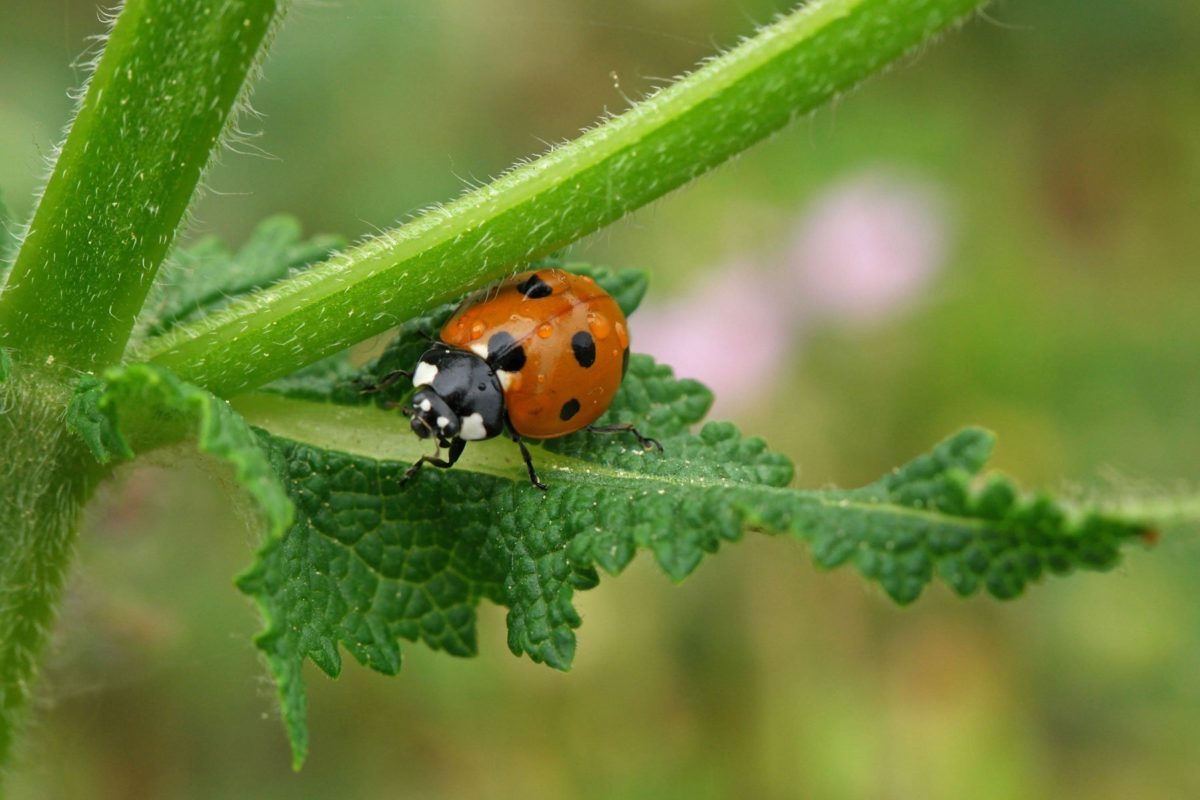


They occur in practically all the major crop-producing regions of temperate and tropical countries. In such situations, they can do major crop damage. Usually, epilachnines are only minor agricultural pests, eating the leaves of grain, potatoes, beans, and various other crops, but their numbers can increase exponentially in years when their natural enemies, such as parasitoid wasps that attack their eggs, are in fewer numbers. However, some species do have unwelcome effects among these, the most prominent are of the subfamily Epilachninae (which includes the Mexican bean beetle), which are herbivorous themselves. Many coccinellids lay their eggs directly in aphid and scale insect colonies in order to ensure their larvae have an immediate food source. The majority of the more than 6000 described species are generally considered beneficial insects, because many prey on herbivorous hemipterans such as aphids or scale insects, which are agricultural pests. Entomologists prefer the names ladybird beetles or lady beetles as these insects are not classified as true bugs. The family is commonly known as ladybugs in North America and ladybirds in Great Britain and other parts of the English-speaking world. Coccinellidae ( / ˌ k ɒ k s ɪ ˈ n ɛ l ɪ ˌ d iː/) is a widespread family of small beetles ranging in size from 0.8 to 18 mm ( 1⁄ 32– 23⁄ 32 in). Tropical Agricultural Research Vol: 19, 69-77 (2007). ^ "Predatory Coccinellids (Coleoptera: Cocinellidae) of vegetable insect pests: a survey in mid country of Sri Lanka" (PDF).Archived from the original on 9 April 2011. The State of Queensland (Department of Employment, Economic Development and Innovation). Queensland Government: Primary Industries and Fisheries. ^ Entomology Team (Field Crops) (10 February 2010).Archived from the original on 21 December 2015. "A revision of the Australian Coccinellidae (Coleoptera). ^ "Transverse Ladybird ( Coccinella transversalis)".Department of Agriculture & Food Western Australia. ^ a b " Coccinella transversalis Fabricius".Among those insects hunted include many species of aphids, including the pea aphid ( Acyrthosiphon pisum), Aphis affinis, cowpea aphid ( Aphis craccivora), cotton aphid ( Aphis gossypii), milkweed aphid ( Aphis nerii), spirea aphid ( Aphis spiraecola), leafcurling plum aphid ( Brachycaudus helichrysi), cabbage aphid ( Brevicoryne brassicae), Cervaphis quercus, Cervaphis rappardi indica, turnip aphid ( Lipaphis pseudobrassicae), Macrosiphoniella yomogifoliae, potato aphid ( Macrosiphum euphorbiae), rose aphid ( Macrosiphum rosae), Melanaphis donacis, Melanaphis sacchari, Myzus nicotianae, green peach aphid ( Myzus persicae), Pentalonia nigronervosa, corn aphid ( Rhopalosiphum maidis), Sitobion rosaeiformis, Taoia indica, Toxoptera aurantii, Therioaphis ononidis, Therioaphis trifolii, Uroleucon compositae and Uroleucon sonchi, species of leafhopper including Empoascanara indica and Idioscopus clypealis, the scale insect species Orthezia insignis, the Asian citrus psyllid ( Diaphorina citri), the cotton bollworm ( Helicoverpa armigera), and oriental leafworm moth ( Spodoptera litura). Like many species of ladybirds, the transverse ladybird plays an important role in agriculture as it preys on a wide array of plant-eating insects which damage crops, particularly early in the growing season. It has a black head with predominantly bright red or orange elytra boldly marked with a black band down the midline and two lateral three-lobed markings. Measuring 3.8 to 6.7 millimetres (0.15 to 0.26 in) long and 3.3 to 5.45 millimetres (0.130 to 0.215 in) wide, the transverse ladybird shows little variation across its wide range.


 0 kommentar(er)
0 kommentar(er)
